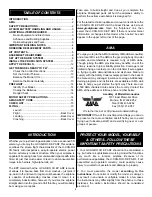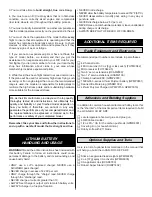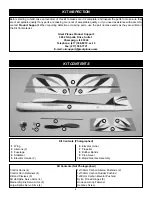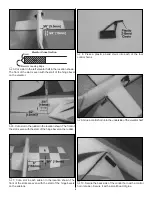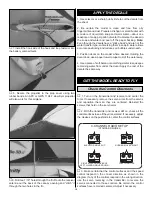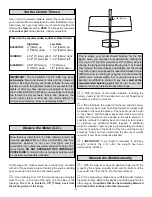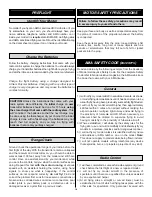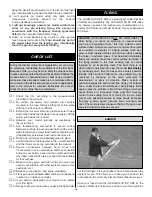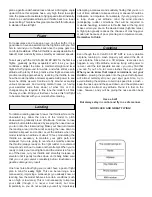
3
3. You must take time to build straight, true and strong.
4. You must use an R/C radio system that is in first-class
condition, and a correctly sized engine and components
(fuel tank, wheels, etc.) throughout the building process.
5. You must correctly install all R/C and other components so
that the model operates correctly on the ground and in the air.
6. You must check the operation of the model before every
flight to insure that all equipment is operating and that the
model has remained structurally sound. Be sure to check
clevises or other connectors often and replace them if they
show any signs of wear or fatigue.
7. If you are not an experienced pilot or have not flown this
type of model before, we recommend that you get the
assistance of an experienced pilot in your R/C club for your
first flights. If you’re not a member of a club, your local hobby
shop has information about clubs in your area whose
membership includes experienced pilots.
8. While this kit has been flight tested to exceed normal use,
if the plane will be used for extremely high stress flying, such
as racing, or if an engine larger than one in the recommended
range is used, the modeler is responsible for taking steps to
reinforce the high stress points and/or substituting hardware
more suitable for the increased stress.
Remember: Take your time and follow the instructions to
end up with a well-built model that is straight and true.
WARNING!! Read the entire instruction sheet included with
this battery. Failure to follow all instructions could cause
permanent damage to the battery and its surroundings, and
cause bodily harm!
• ONLY use a Li-Po approved charger. NEVER use a
NiCd/NiMH peak charger!
• NEVER charge in excess of 4.20V per cell.
• ONLY charge through the “charge” lead. NEVER charge
through the “discharge” lead.
• NEVER charge at currents greater than 1C.
• ALWAYS set charger’s output volts to match battery volts.
• ALWAYS charge in a fireproof location.
• NEVER trickle charge.
• NEVER allow the battery temperature to exceed 150°F (65°C).
• NEVER disassemble or modify pack wiring in any way or
puncture cells.
• NEVER discharge below 2.5V per cell.
• NEVER place on combustible materials or leave unattended
during charge or discharge.
• ALWAYS KEEP OUT OF REACH OF CHILDREN.
Recommended part numbers are include in parentheses.
❏
4-Channel radio
❏
4 Micro servos (0.3 oz [9g] or less each) (FUTM0042)
❏
Micro receiver (FUTL0442-3)
❏
Two 6” servo extensions (HCAM2000)
❏
Two 12” servo extensions (HCAM2100)
❏
30-amp brushed ESC (GPMP2030)
❏
1500mAh 3-series Lithium Polymer battery (GPMP0831)
❏
Deans Ultra Male plug (WSDM1302)
❏
Lithium Polymer Charger (GPMP3150, GPMP3010)
In addition to common household tools and hobby tools, this
is the “short list” of the most important items required to build
the U-CAN-DO 3D EP ARF.
❏
Low-temperature hot-melt glue and glue gun
❏
60/40 tin/lead solder
❏
1/2 oz Pro
™
CA for the carbon pushrods (GPMR6001)
❏
Covering iron (or household iron)
❏
Hobby knife with #11 blade
Here is a list of optional tools mentioned in the manual that
will help you build the U-CAN-DO 3D EP ARF.
❏
Stick-on segmented lead weights (GPMQ4485)
❏
2 oz. [57g] spray CA activator (GPMR6035)
❏
CA applicator tips (HCAR3780)
❏
Robart Super Stand II (ROBP1402)
Optional Supplies and Tools
Adhesives and Building Supplies
Radio Equipment and Electronics
ADDITIONAL ITEMS REQUIRED
LITHIUM BATTERY
HANDLING AND USAGE
We, as the kit manufacturer, provide you with a top quality,
thoroughly tested kit and instructions, but ultimately the
quality and flyability of your finished model depends on
how you build it; therefore, we cannot in any way
guarantee the performance of your completed model, and
no representations are expressed or implied as to the
performance or safety of your completed model.


